trebuie să fii logat
-
întoarce-teX
-
Componente
-
-
Category
-
Semiconductoare
- Diode
- tiristoare
- Module izolate electric
- Redresoare în punte
-
Tranzistoare
- tranzistoare GeneSiC
- Module MOSFET Mitsubishi SiC
- Module MOSFET STARPOWER SiC
- Module MOSFET ABB SiC
- Module IGBT de la MITSUBISHI
- Module de tranzistori MITSUBISHI
- module MITSUBISHI MOSFET
- Module de tranzistori ABB
- Module IGBT de la POWEREX
- Module IGBT - de la INFINEON (EUPEC)
- Elemente semiconductoare din carbură de siliciu
- Accesați subcategoria
- Șoferii
- Blocuri de putere
- Accesați subcategoria
- Traductoare de curent și tensiune LEM
-
Componente pasive (condensatori, rezistențe, siguranțe, filtre)
- Rezistoare
-
Siguranțe
- Siguranțe miniaturale pentru sisteme electronice din seria ABC și AGC
- Siguranțe tubulare cu acțiune rapidă
- Inserții întârziate cu caracteristici GL/GG și AM
- Legături sigure ultra-rapide
- Siguranțe standard britanice și americane cu acțiune rapidă
- Siguranțe cu acțiune rapidă standard european
- Siguranțe de tracțiune
- Siguranțe de înaltă tensiune
- Accesați subcategoria
-
Condensatoare
- Condensatoare pentru motoare
- Condensatoare electrolitice
- Condensatori Icel Film
- Condensatoare de putere
- Condensatoare pentru circuite DC
- Condensatoare de compensare a puterii
- Condensatoare de înaltă tensiune
- Condensatoare pentru încălzire prin inducție
- Condensatoare de impulsuri
- Condensatoare DC LINK
- Condensatoare pentru circuite AC/DC
- Accesați subcategoria
- Filtre anti-interferențe
- Supercondensatoare
- Protecție la supratensiune
- Filtre de emisii revelatoare TEMPEST
-
Descărcător de supratensiune
- Descărcătoare de supratensiune pentru rețeaua de curent alternativ
- Descărcătoare de supratensiune pentru rețea de curent continuu
- Limitatoare de joasă tensiune ALVL
- Limitatoare de joasă tensiune PG
- Descărcătoare de trăsnet pentru rețele de curent alternativ până la 1000V
- Dispozitive de măsurare
- Accesați subcategoria
- Accesați subcategoria
-
Relee și Contactoare
- Teoria releelor și contactoarelor
- Relee cu stare solidă trifazată CA
- Relee cu stare solidă DC
- Regulatoare, sisteme de control și accesorii
- Porniri ușoare și contactoare inversoare
- Relee electromecanice
- Contactoare
- Comutatoare rotative
-
Relee cu stare solidă CA monofazate
- Relee cu stare solidă CA monofazate Seria 1 | D2425 | D2450
- Relee semifazate CA monofazate, seria CWA și CWD
- Relee semifazate CA monofazate seriile CMRA și CMRD
- Relee cu stare solidă CA monofazate Seria PS
- Relee cu stare solidă AC seria duble și cvadruple D24 D, TD24 Q, H12D48 D
- Relee monofazate din seria GN
- Relee cu stare solidă CA monofazate Seria CKR
- Relee monofazate pentru șină DIN AC SERIA ERDA și ERAA
- Relee AC monofazate pentru curent de 150A
- Relee duble cu stare solidă integrate cu radiator pe șină DIN
- Accesați subcategoria
- Relee cu stare solidă imprimabile monofazate CA
- Relee de interfață
- Accesați subcategoria
- Miezuri și alte componente inductive
- Radiatoare, Varistoare, Protectie termica
- Fani
- Aer conditionat, Accesorii tablou, Racitoare
-
Baterii, încărcătoare, surse de alimentare tampon și convertoare
- Baterii, încărcătoare - descriere teoretică
- Baterii litiu-ion. Baterii personalizate. Sistem de management al bateriei (BMS)
- baterii
- Incarcatoare de baterii si accesorii
- UPS și surse de alimentare tampon
- Convertoare si accesorii pentru fotovoltaice
- Stocarea energiei
- Pile de combustibil cu hidrogen
- Celule litiu-ion
- Accesați subcategoria
-
Automatizare
- Elevatoare Spiralift
- Piese pentru drone Futaba
- Întrerupătoare de limită, Micro întrerupătoare
- Senzori, traductoare
- Pirometre
- Contoare, relee de timp, contoare de panou
- Echipament industrial de protectie
- Semnale luminoase și sonore
- Cameră termică
- Afișaje LED
- Butoane și întrerupătoare
- Accesați subcategoria
-
Cabluri, fire Litz, Conduite, Conexiuni flexibile
- Firele
- Presetupe și manșoane
- Chipurile
-
Cabluri pentru aplicatii speciale
- Cabluri de prelungire și compensare
- Cabluri de termocuplu
- Cabluri de conectare pentru senzori PT
- Cabluri cu mai multe fire de temperatură. -60°C până la +1400°C
- Cabluri de medie tensiune SILICOUL
- Cabluri de aprindere
- Cabluri de incalzire
- Cabluri cu un singur conductor temp. -60°C până la +450°C
- Fire de cale ferată
- Cabluri de încălzire în ex
- Cabluri pentru industria de apărare
- Accesați subcategoria
- tricouri
-
Impletituri
- Impletituri plate
- Impletituri rotunde
- Impletituri foarte flexibile - plate
- Impletituri foarte flexibile - rotunde
- Impletituri cilindrice de cupru
- Impletituri si capace cilindrice din cupru
- Curele flexibile de împământare
- Impletituri de cupru izolate PVC - temperatura de pana la 85 de grade C
- Impletituri plate din aluminiu
- Kit de conectare - impletituri si tuburi
- Impletituri de otel
- Accesați subcategoria
- Echipament de tracțiune
- Capse de cablu
- Sine flexibile izolate
- Sine flexibile multistrat
- Sisteme de management al cablurilor
- Accesați subcategoria
- Vezi toate categoriile
-
Semiconductoare
-
-
- Furnizori
-
Aplicații
- Automatizare HVAC
- Automatizare industrială
- Băncile de energie
- Cercetare si masuratori de laborator
- Componente pentru zonele cu pericol de explozie (EX)
- Echipament industrial de protectie
- Echipamente pentru dulapuri de distributie si control
- Exploatare minieră, metalurgie și turnătorie
- Imprimare
- Încălzire prin inducție
- Inginerie energetică
- Mașini CNC
- Masini de sudura si sudori
- Mașini de uscare și prelucrare a lemnului
- Masini pentru termoformarea materialelor plastice
- Măsurarea și reglarea temperaturii
- Motoare si transformatoare
- Surse de alimentare (UPS) și sisteme redresoare
- Tracțiune cu tramvai și feroviar
- Unități DC și AC (invertoare)
-
Instalare
-
-
Inductori
-
-
Dispozitive de inducție
-
-
Serviciu
-
- Kontakt
- Zobacz wszystkie kategorie
Humidity sensors - principle of operation, installation

Humidity is the presence of water in the air. The amount of water vapour in the air can affect human comfort as well as many industrial production processes. The presence of water vapour also affects various physical, chemical and biological processes.
Humidity sensors work by detecting changes that alter electrical currents or temperature in the air. There are three basic types of humidity sensors: capacitive, resistive, and thermal (thermally conductive). All three types monitor small changes in the atmosphere to calculate the humidity of the air.
A capacitive humidity sensor measures relative humidity by placing a thin strip of metal oxide between two electrodes. The electrical capacitance of the metal oxide changes with the relative humidity of the atmosphere. The main application areas are meteorological stations, electrical engineering industries, HVAC automation.
Resistive humidity sensors use ions in salts to measure the electrical impedance of atoms. As the humidity changes, the resistance of the electrodes on either side of the salt medium changes.
Thermal sensors conduct an electrical current depending on the humidity of the surrounding air. They are most commonly made of two sensors in one housing - one sensor is encased in dry nitrogen while the other measures the humidity of the air. The difference between the two indicates the humidity.
Application of humidity sensors
Capacitive relative humidity sensors are used in many applications to measure humidity in printers, HVAC systems, fax machines, automobiles, weather stations, refrigerators, food processing, etc.
Because of their small size and low cost, resistive sensors are used in domestic, residential and industrial applications.
Thermally conductive sensors are typically used in dryers, food dehydration, pharmaceutical facilities, etc.
Below are examples and application of humidity sensors:
Domestic: Controlling and sensing humidity in offices and homes is important because higher humidity can affect mood e.g. change in blood flow, feeling uncomfortable. Other application areas include indoor plant farms, cooking, etc.
Industrial: Industries such as chemical, refining, metallurgy where furnaces are used need humidity sensors because high humidity reduces the amount of oxygen present in the air, which can significantly affect the productivity of these industries. Other industries such as paper, textile, food, etc. also require humidity control.
Agriculture: Drip irrigation is a crop growing technique that requires precise humidity. Soil moisture also plays an important role in plant growth. When growing plants indoors or in greenhouses, moisture level testing is essential for their proper growth.
Electronics and Semiconductors: A number of electronic devices are parameterized with respect to the range of humidity in which they will operate properly. Generally, the value is between 10 and 50% humidity. Semiconductor manufacturing facilities must also maintain very precise humidity and temperature values, as even a minute difference can have a huge impact on production.
Medical: Medical equipment such as sterilizers, incubators, ventilators, etc. require humidity control. Humidity sensors are also used in pharmaceutical facilities.
Issues that humidity can cause in industry
In many factories, steam and humidity are daily byproducts of various industrial processes; if not properly maintained, excessive humidity levels can cause a host of problems, resulting in delays, safety hazards and additional expenses.
Even reliable air conditioning may not be enough to achieve the required relative humidity, as the percentage of relative humidity increases as the room temperature decreases.
Different manufacturing facilities have different humidity problems, depending on the specific equipment and products used. Particularly in machine shops, excess moisture can cause condensation, fog or mold buildup that can damage products, equipment and even the facility structure itself.
A safety hazard
Condensation can form on store floors creating a dangerous, slippery environment. Electrical and electronic equipment can also quickly become saturated, posing serious safety and quality risks. Electrical products exposed to high levels of moisture often corrode and reduce insulation resistance, which can eventually cause short circuits.
The problem with labelling
The surface to which the label is applied must not be wet. Condensation may occur on it due to the temperature difference between the packaging and the air in the room. The air must have a relative humidity of about 40-45% for the surface of the packaging to remain dry and for the label to stick. We put labels on fruit, bottles, anything that needs some labelling.
Disrupting drying cycles
Products that require specific drying cycles are also susceptible to moisture problems; if humidity levels are too high, drying times can be severely delayed, resulting in production shutdowns, increased energy consumption, and lost productivity.
Dry food packaging plants are an example. When exposed to excessive humidity, the quality of food products is compromised, which can threaten the health and well-being of consumers. In addition, many insects and insects seek humid conditions, thriving in areas with humidity levels between 70-80%.
Humidity sensors do their job
In order for your manufacturing facility to run at peak efficiency, it is essential to maintain proper humidity levels. Taking care of air quality and humidity levels should be one of the key aspects that every industrial business strives for. Using the highest quality humidity sensors will allow you to precisely control humidity levels in your premises, which will result in increased productivity, as well as ensuring the safety of machinery and equipment, and the comfort of employees or users of a given room.
Related products
Related posts
 Now available – DC/DC converters from PREMIUM
Now available – DC/DC converters from PREMIUM
 New release in DACPOL lighting for lathes – Kira covers
New release in DACPOL lighting for lathes – Kira covers

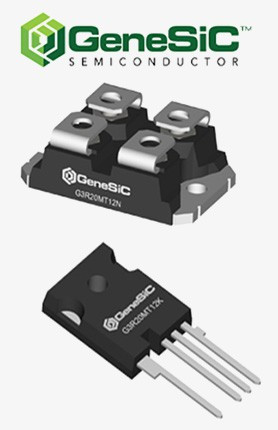
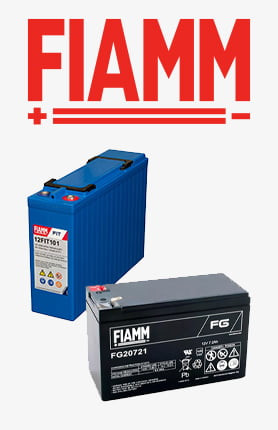
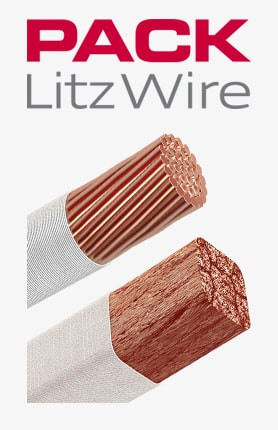
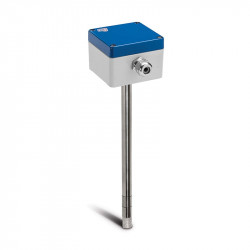
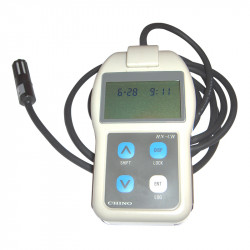
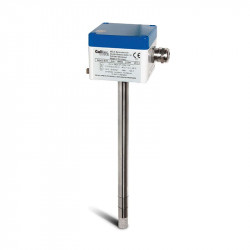
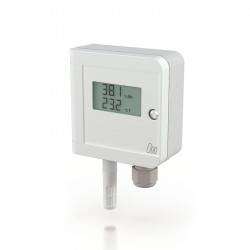
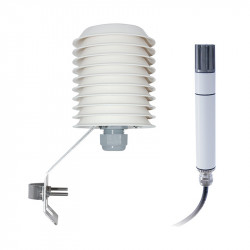

Leave a comment